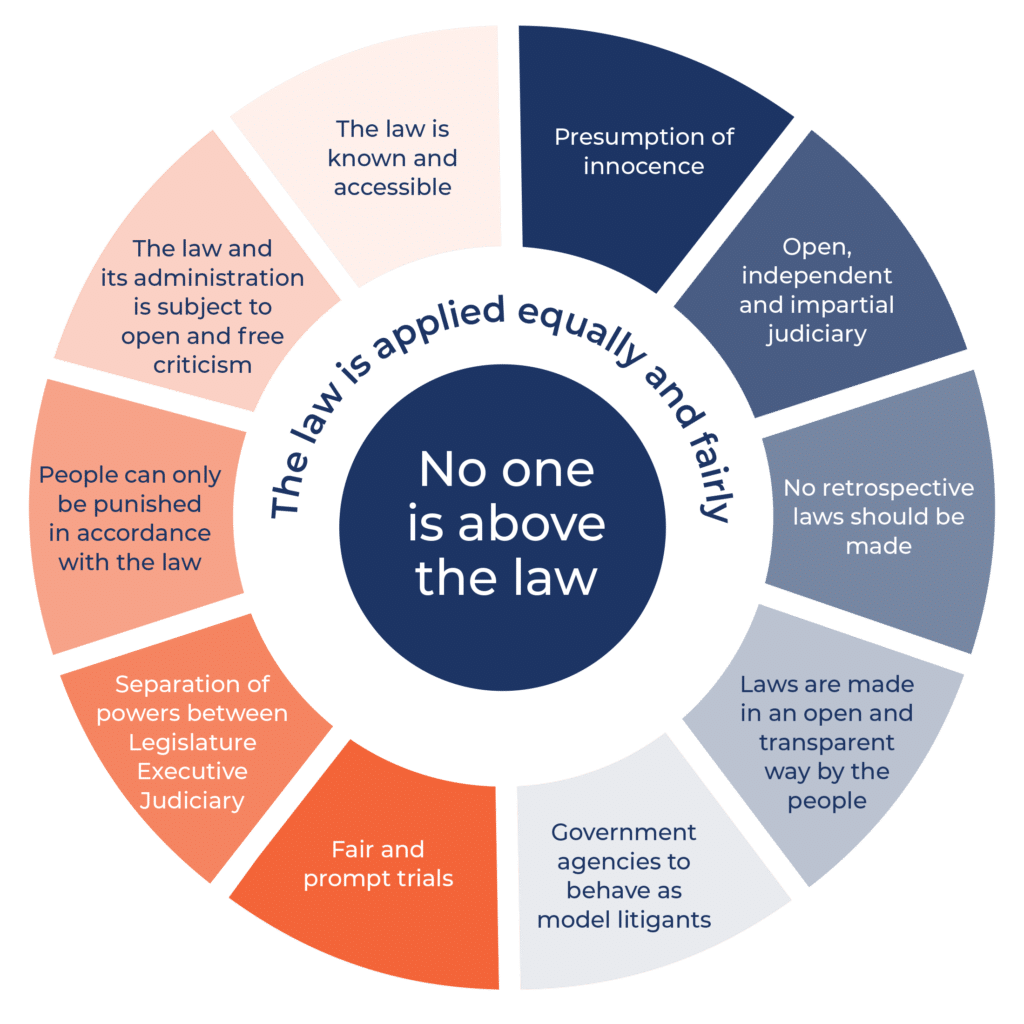A couple of weeks ago, the High Court handed down its judgment in NH v Director of Public Prosecutions [2016] HCA 33. The case concerned four defendants in South Australia who were accused of murder. After a trial before a judge and jury, they were acquitted of murder, but found guilty of manslaughter. The case raises important issues about the powers and jurisdiction of courts. These issues are important for the rule of law as they relate to checks and balances on the use of judicial power.
Background
Last week, the High Court handed down its judgment in NH v Director of Public Prosecutions [2016] HCA 33. The case concerned four defendants in South Australia who were accused of murder. After a trial before a judge and jury, they were acquitted of murder, but found guilty of manslaughter.
Under section 57 of the Juries Act 1927 (SA), the jury was only allowed to consider whether the four defendants were guilty of manslaughter once they had already found them not guilty of murder by a unanimous or majority verdict. A majority verdict was 10 or more members of the jury deciding ‘not guilty’. The manslaughter offence could then be decided by unanimous or majority verdict.
At the end of the jury’s deliberation, the jury foreperson was asked for the jury’s verdict. He informed the judge that the jury had returned verdicts of not guilty to the charges of murder, but guilty to manslaughter. He did so in the presence of the rest of the jury, and under close questioning from the trial judge. None of the other jurors dissented. The verdicts were recorded, and the trial judge discharged the jury.
However, later that day, the jury foreperson contacted the Court and told them that he had accidentally answered the questions incorrectly. In actual fact, according to his evidence and evidence later gathered from the others jurors, the jury had not reached a majority verdict of ‘not guilty’ on any of the murder charges, they had simply been deadlocked. Perhaps they were divided 9-3 (not guilty-guilty) or 6-6 or 1-11 (a person cannot be convicted of murder by majority).
There was, though, a majority or unanimous verdict of ‘guilty’ on each of the manslaughter charges. However, the jury’s capacity to consider the manslaughter charges was dependent on them having reached a unanimous or majority verdict of ‘not guilty’ of murder first. They had not done this.
As a result, the Director of Public Prosecutions appealed the four defendants’ acquittals. He argued that an abuse of process had occurred because section 57 hadn’t been complied with, and the four ought to be re-tried before a fresh jury on the charge of murder. This is often what would happen where a jury is deadlocked. He said the Court had an inherent power to correct abuses of process, and protect the integrity of its own proceedings. Four people shouldn’t be let off a murder charge just because the jury foreperson misunderstood some questions from the trial judge.
The Full Court of the Supreme Court of South Australia agreed with the Director, quashed all the verdicts, and ordered the four defendants to be re-tried for murder.
The defendants appealed to the High Court, and were granted special leave in March this year.
At the High Court
The High Court found that the key to the case was whether the Full Court had the power to do what it did, in quashing all the verdicts from the trial.
The Director had argued that the Court had “inherent jurisdiction” to quash the verdicts as an abuse of process. The idea of inherent jurisdiction often relates to State Supreme Courts, and refers to the incidental powers of courts to do what is necessary for the administration of justice in the matters before them. Examples include the power to punish people for contempt of court, the power to grant injunctions, and the power to stay proceedings in order to prevent abuse of process. The Director argued that quashing the verdicts was an inherent power too. The Full Court agreed.
However, the High Court disagreed. They reminded the parties of the difference between “inherent jurisdiction” and an “inherent power”. The Court said ‘jurisdiction’ is about the capacity of the court to hear litigation on particular matters, whereas ‘power’ is about what the court can do to resolve that litigation. The Full Court did not have the power to quash the verdicts, said the High Court.
This was for a number of reasons. There is a tradition of not “looking behind”, or admitting challenges to, jury verdicts that are delivered, without dissent, in front of every member of the jury. There is also the principle of finality, which says that, once a case has been resolved in a court, it should not be re-opened except in a few, limited sets of circumstances. There are also even stricter limitations on appealing acquittals.
The High Court said that any inherent power of the Full Court to prevent abuse of its processes was limited by these other competing, or limiting, principles. Accordingly, it did not have power to quash the jury verdicts and order re-trials.
Checks and balances
This case indicates the importance of checks and balances on the exercise of judicial power. Checks and balances are commonly associated with the legislative and executive branches, and often refer to the judicial branch outlining the limits of those branches’ powers.
The same notion applies to different levels of the judicial branch checking other levels, and making sure that courts do not claim to exercise powers that they do not have. This is important for the rule of law, because it maintains public confidence in the legal system, and prevents overreach by courts.
— William Shrubb


